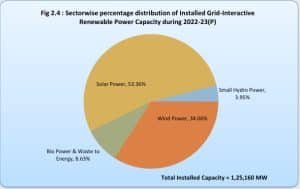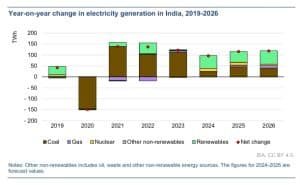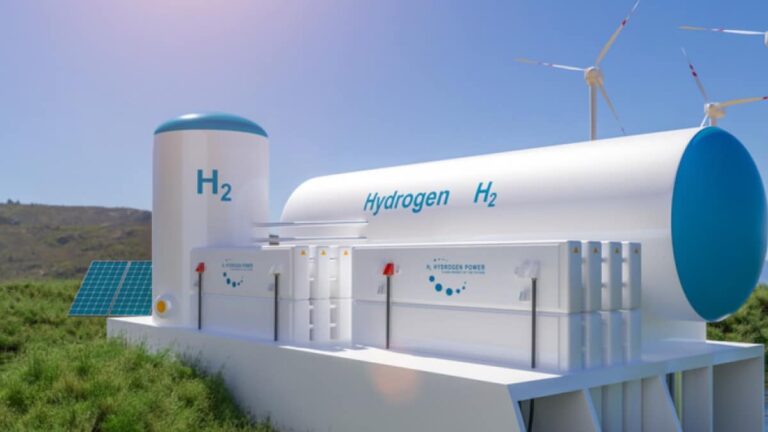The World Bank has approved $1.5 billion to boost low-carbon energy in India. This operation aims to fuel India’s green hydrogen market, expand renewable energy and boost financing of low-carbon projects. The funding, announced on June 29, represents the second phase of the Programmatic development policy operation for low-carbon energy.
Transforming India’s renewable energy market with a $1.5 billion investment plan
India, the fastest growing massive economy in the world, will continue its rapid expansion. To decouple this growth from emissions, scaling up renewable energy, especially in hard-to-fight industrial sectors, is essential. This strategy aims to increase production and consumption of green hydrogen, in addition to accelerating climate finance to support low-carbon investments. Elaborating further, the $1.5 billion second phase aims to transform the Indian real estate market by:
- Producing approximately 450,000 tons of green hydrogen and 1,500 MW of electrolyzers annually from the 2025-2026 financial year. It will cover the costs of the latest technology required for the production of green hydrogen.
- Increasing renewable energy capacity by promoting battery energy storage solutions. It also promotes the integration of renewable energy through battery energy storage incentives and changes to the Indian Electricity Grid Code. This is poised to reduce emissions by 50 million tons annually.
- Promoting the development of a national carbon credit market.
 source: Energy Statistics India 2024
source: Energy Statistics India 2024
Auguste Tano Kouame, World Bank Country Director for India, commented:
“The World Bank is pleased to continue supporting India’s low-carbon development strategy, which will help achieve the country’s net-zero target while creating clean energy jobs in the private sector. Both the first and second operations are strongly focused on stimulating private investments in green hydrogen and renewable energy.”
First results of the Low Carbon Energy Program
Last year (2023) in June, the World Bank approved the first programmatic development policy operation worth US$1.5 billion. According to the World Bank, this initiative has facilitated the waiver of transmission charges for renewable energy in green hydrogen projects in India. It also outlined a clear strategy to launch tenders for 50 GW of renewable energy annually and created a legal framework for a national carbon credit market.
Aurélien Kruse, Xiaodong Wang and Surbhi Goyal, team leaders of the operation, jointly said:
“The operation will help scale up investments in green hydrogen and renewable energy infrastructure. This will contribute to India’s journey towards achieving Nationally Determined Contribution targets.”
The executives also praised India’s efforts to establish a robust domestic market for green hydrogen, supported by rapidly growing renewable energy capacity. They noted that the first tenders under the National Green Hydrogen Mission incentive program have attracted significant interest from the private sector.
India’s renewable energy landscape through the IEA lens
IEA‘s 2024 publication explores the link between the Indian economy and renewable energy demand. India’s GDP grew by 7.8% in 2023, making the country the fastest growing major economy in the world and the fifth largest in the world. India’s energy demand is expected to surpass all regions by 2050 due to urbanization and increased demand for electricity, cement and steel. This dependence on imported fossil fuels could significantly increase CO2 emissions. Therefore, there is an urgent need to reduce emissions and reach net zero by 2070.

 India has scaled up investments in solar and wind energy and promoted domestic clean energy production through the Production Linked Incentives program. The country also has strong energy efficiency programs and a new hydrogen policy.
India has scaled up investments in solar and wind energy and promoted domestic clean energy production through the Production Linked Incentives program. The country also has strong energy efficiency programs and a new hydrogen policy.
According to the latest media reports, India entered the green government bond market in January 2023 and issued bonds worth $1 billion. This has boosted investments in clean energy, which reached $68 billion by 2023. Investments in fossil fuels also rose to $33 billion. To meet its energy and climate goals, India must double its investments in clean energy by 2030. However, this would suffice with an additional 20% boost. Reducing the cost of capital is essential to make this possible.
From March 2024India’s thermal energy accounts for 56% of the installed capacity, while renewables contribute 32%, hydropower 11% and nuclear energy 2%. The World Bank has supported this transition with this enormous loan.
- India’s goal is to build 47 GW/236 GWh of battery storage and produce 5 MMT of clean hydrogen by 2030.
- India also plans to achieve 40 GW of electrolyser production capacity, 30 million tonnes of carbon capture and 2 million tonnes of sustainable aviation fuels by 2030.
Overall, the World Bank financing can accelerate India’s commitment to exceed 500 GW renewable energy capacity by 2030. Continue to strive to take the lead in advanced energy solutions. With energy giants such as Tata, Adani and Reliance, the country is close to achieving its energy transition goals.


